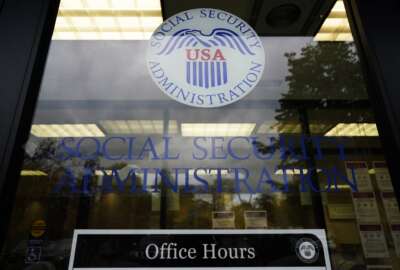After the shutdown: Federal employees cite drain on morale
Eighty-three percent of respondents to a Federal News Radio online poll said morale at their workplace is now worse than before the shutdown. Another 5 percent ...
wfedstaff | April 17, 2015 5:42 pm
Since Congress approved a stopgap funding bill last week that reopened the government, furloughed employees have streamed back into their federal offices, dusted off their desks and begun digging out of piled-up emails.
But improving the morale of the budget-battered federal workforce will likely take longer than clearing out an email inbox.
Eighty-three percent of respondents to a Federal News Radio online poll said morale at their workplace is now worse than before the shutdown. Another 5 percent of respondents said they didn’t feel personally affected but the morale of their co-workers had worsened.
Federal workforce experts and employees, themselves, also say the two-week government shutdown has opened up a rift of resentment between groups of federal employees which, in part, is fueling the morale drain.
“There are haves and have-nots in this, and it’s not even clear which is which,” said John Palguta, the vice president for policy at the Partnership for Public Service, in a recent interview with the Federal Drive with Tom Temin and Emily Kopp.
Initially, the scales seemed to be tipped in favor of the employees who were excepted from furloughs, who kept on working despite the shutdown and were guaranteed pay once Congress restored funding. Meanwhile, hundreds of thousands of federal employees were deemed “nonessential” and forced to stay home with no promise they would ever be paid.
In the stopgap funding bill that reopened the government, however, Congress approved retroactive pay for furloughed workers, essentially turning the two weeks of forced furloughs into something like a surprise mid-October vacation.
“How is that fair? I came to work every day and was told not to leave since I might not get paid,” an employee with the Social Security Administration, who asked that we not use his name, wrote to Federal News Radio. “This government has everything backwards. They reward the lazy workers at the expense of the hard workers.”
‘Nonessential’ term degrading?
Despite receiving word that they’ll be paid, furloughed feds are also facing their own morale issues.
“Now that the furloughed workers are back, there are attitudes from those that were forced to report for work,” a U.S. Border Patrol employee, who wished to remain anonymous, wrote in an email to Federal News Radio. “Federal workers were played like pawns for no reason and it was useless … Back pay or no back pay, this has caused some very deep wounds that will heal, but will last a lifetime.”
Early on during the shutdown, furloughed feds were also tagged with a term many saw as an insult: “nonessential.”
In official Office of Personnel Management guidance, the term “nonessential” is never used. Employees are either “excepted” from furloughs under the terms of the Antideficiency Act, which governs budgeting during a shutdown, or “nonexcepted.”
No matter, the term quickly cropped up in news reports, social media and even congressional debate.
A week into the shutdown, the Senior Executives Association, which represents the 8,000 members of the Senior Executives Service (SES) in the federal government, had had enough. The group called on Congress and the media “to stop denigrating federal employees through the use of the term ‘essential’ when discussing the status of furloughed employees,” an Oct. 8 press released stated.
“The mere term,” the group said, “is detrimental to effective operations and employee morale.”
GovLoop.com, a social networking site for federal employees, embarked on a “You Are Essential” campaign to give furloughed workers a motivation boost and to try to eliminate the shutdown-created divide between workers. Users can request faux name-tag stickers that read “HELLO I am Essential (even if Congress doesn’t think so)” and are encouraged to post pictures of them and their colleagues sporting the stickers at the office.
The campaign is designed “to show folks that they matter, and they’re all essential in our book,” Steve Ressler, GovLoop’s founder and president, told Federal News Radio. So far, the site has received more than 550 requests.
Bumpy path to business as usual
With piled-up projects and missed deadlines, the return to business as usual at the office faces a bumpy path, which won’t do anything to boost workers’ sagging morale.
“There’s going to be some massive backlogs out there,” the Partnership for Public Service’s Palguta said. “How do you clear up the backlogs and focus on getting the day-to-day things done going forward?”
That could be compounded because many agency leaders — if they’re political appointees — were not furloughed during the shutdown.
“So … when they were roaming empty halls, they were probably thinking of some new initiatives they can do,” he said. “Well, you’re going to have to kind of hold some of that in abeyance while you just focus on getting back to the normal stuff. You’ve got to focus on mission, but don’t start adding to it just yet.”
What else should managers do? For one, don’t be afraid to talk about the shutdown with your employees, said Sean Morris, leader of Deloitte’s Federal Human Capital Practice.
“Not addressing it is like sweeping the elephant in the room under the rug,” he said in a recent interview with the Federal Drive. “And I think that festers over time, and it starts to beg questions from our employees. So the best thing you can do is communicate and engage. Most importantly, be a good listener. They’ll engage to you. It’s not whining, but it’s them bringing forth their concerns and their questions to you.”
Also likely tamping down employee morale for the foreseeable future is the continued uncertainty surrounding the federal budget. The current continuing resolution only funds agencies through Jan. 15. Until then, as part of the funding bill that reopened the government, a budget conference committee will meet in the hopes of hammering out a longer-term funding deal.
Rank-and-file feds remain wary, however.
“We’re still going to be watching our pennies,” Cindy Blythe, a management program analyst with the U.S. Coast Guard, told the Federal Drive in a recent interview. “There’s not going to be any mad rush to go spending. … I’m worried about what will happen in January. I would like to think that Congress will be able to get together and come up with something that both sides will be able to vote on. But they couldn’t do it in a year; I don’t know how they’re really going to do it in two months.”
RELATED STORIES:
POLL: How has the shutdown affected morale?
FAQ: Feds’ post- shutdown questions answered
Once shutdown ends, employee morale slump likely awaits
Keeping the office on track is key to management in shutdown mode
Copyright © 2024 Federal News Network. All rights reserved. This website is not intended for users located within the European Economic Area.





